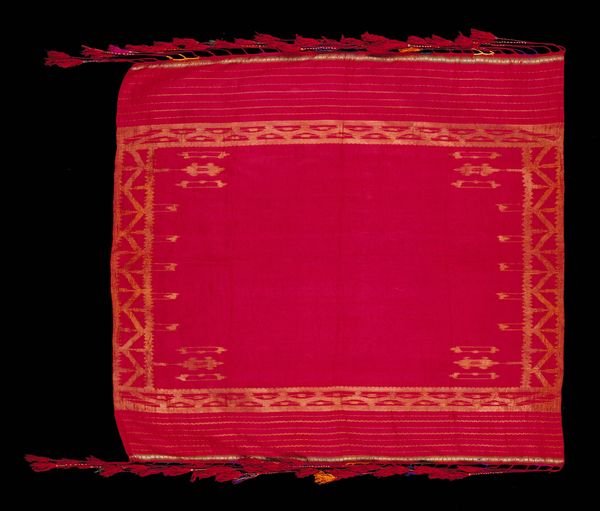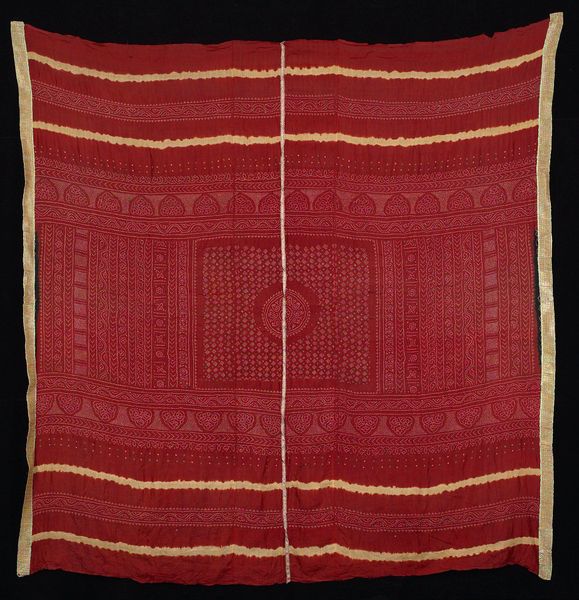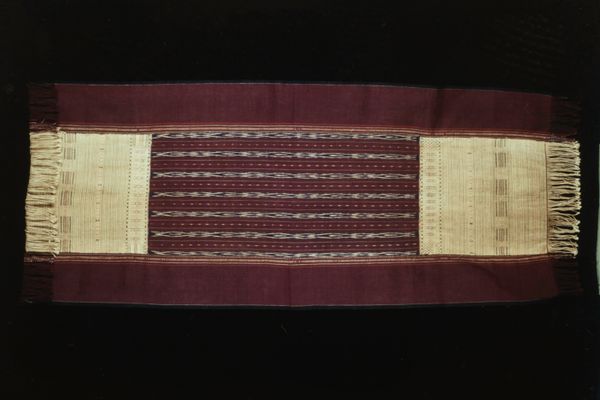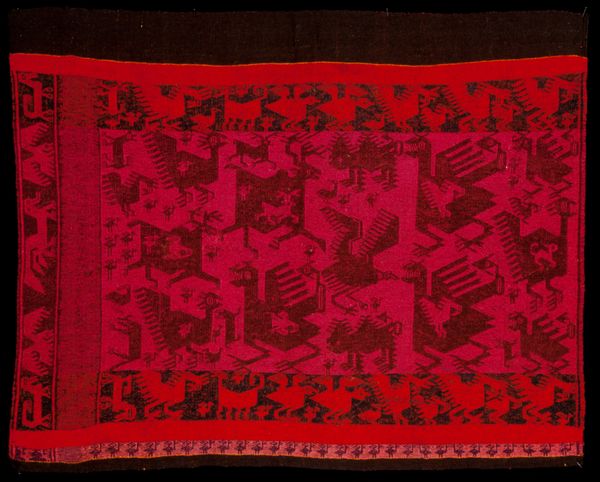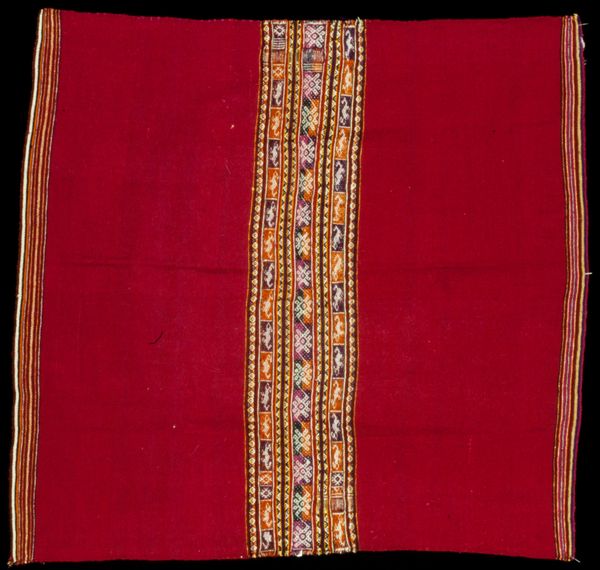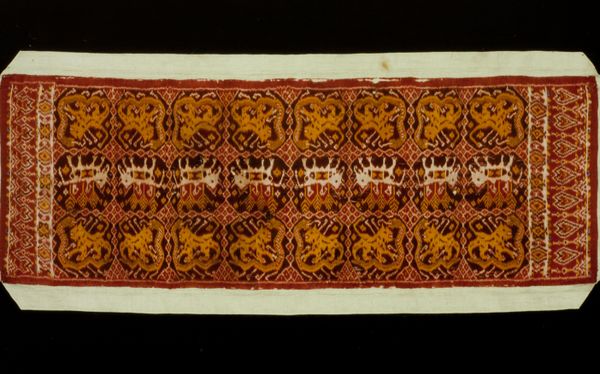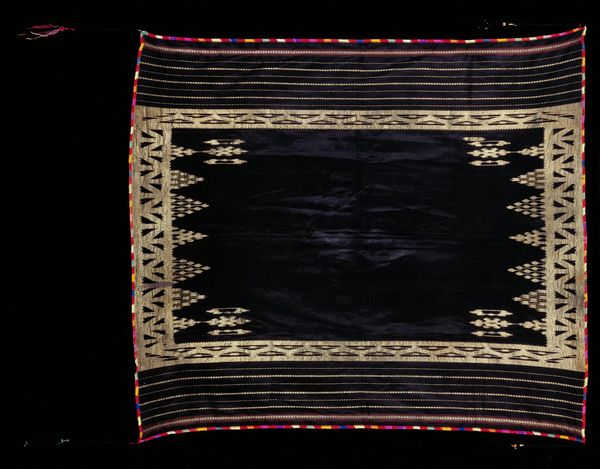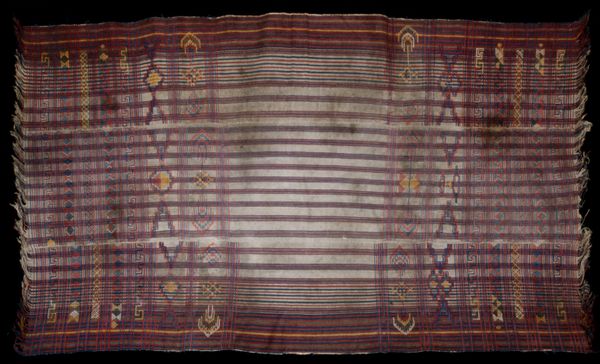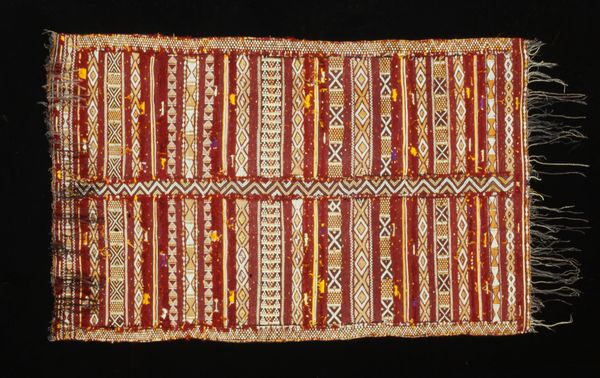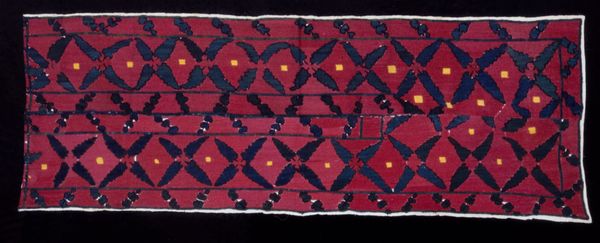
fibre-art, weaving, textile
#
fibre-art
#
weaving
#
textile
#
geometric pattern
#
geometric
#
geometric-abstraction
#
indigenous-americas
Dimensions: 23 3/4 x 30 1/2 in. (60.3 x 77.5 cm) (irregular)
Copyright: Public Domain
Editor: This is a Woman’s ceremonial half overskirt, or aksu, made around the 20th century by Quechua artists. It's currently held at the Minneapolis Institute of Art and seems to be crafted from woven wool. The strong reds and geometric shapes are so striking. What do you see when you look at it? Curator: Formally, the organization of the textile into distinct horizontal registers is compelling. Observe how the dark brown upper field provides a grounding weight, contrasting with the vibrant reds punctuated by geometric and zoomorphic forms in the subsequent bands. Consider, too, the textural variation achieved through different weaving techniques. What semiotic relationships might exist between these elements? Editor: Zoomorphic? You mean the animal shapes? So the textile is communicating on several levels, from just the colors and the textures to the actual figures depicted? Curator: Precisely. We might even interpret the colour palette through a structuralist lens, noting how the binary opposition of red and brown contributes to the overall visual tension. Think about how the weaver manipulates the materiality of the wool to create rhythm and depth. Editor: That’s fascinating. I hadn’t considered the texture playing such an important role beyond just, well, texture. So, if the textile is structured with so much visual opposition, what kind of dialogue does that create, between, say, the viewer and the artwork itself? Curator: An astute question! The dialogue hinges on the viewer’s active engagement with the formal elements. The contrasting bands, the shifts in pattern density, and the subtle chromatic variations invite close visual scrutiny. It encourages an aesthetic experience rooted in formal relationships. Editor: I see. Paying attention to those details really opens up a new way of appreciating the skill and intent behind this piece. Curator: Indeed. Focusing on those relationships allows us to think and discuss art on much deeper and varied levels.
Comments
minneapolisinstituteofart almost 2 years ago
⋮
This textile is an overskirt known as an aksu, which would have been worn similar to an apron over a full skirt or dress. Although it is displayed vertically here to better see the decorative motifs, the garment was intended to be used horizontally, with the large, plain swath of dark fabric at one edge tucked into a belt. Andean textiles are made to be seen on the body. As the wearer moved, the patterns woven into this garment would have appeared in a more dynamic fashion. Weavers of the Potolo region are particularly known for their vibrant animal designs, featuring birds, horses, cattle, cats, and mythical creatures.
Join the conversation
Join millions of artists and users on Artera today and experience the ultimate creative platform.
